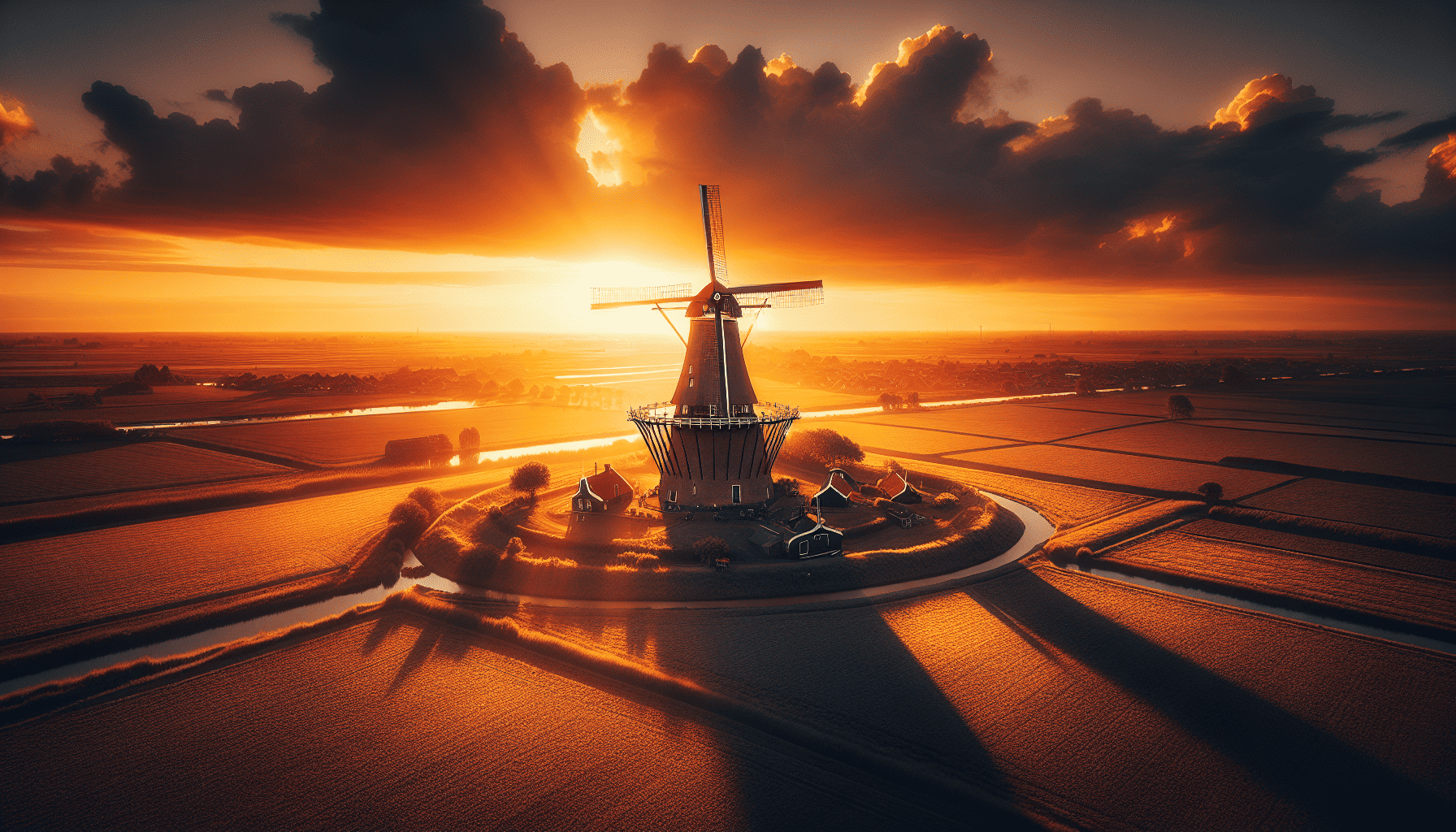The Netherlands is renowned for its picturesque landscapes dotted with iconic windmills, structures that have become symbols of Dutch ingenuity and resilience. The history of Dutch windmills is a tale of innovation, perseverance, and the vital relationship between the Dutch people and their environment.
The origins of windmills in the Netherlands can be traced back to the 12th century. The country’s geography, characterized by low-lying plains and frequent flooding, necessitated innovative solutions for water management. Early Dutch settlers, determined to reclaim land from the sea and marshes, turned to wind power as a means to drain water and reshape the landscape. Thus, the windmill became a crucial tool in the Dutch arsenal against nature.
By the 15th century, the polder windmill was developed, specifically designed for draining wetlands. These structures were fundamental in transforming unusable swampland into arable land. The famous Kinderdijk area, now a UNESCO World Heritage site, showcases a collection of 19 windmills built to control water levels in one of the country’s most flood-prone regions.
As time progressed, the purpose of windmills evolved beyond water management. By the 17th century, the Dutch Golden Age, the versatility of windmills was harnessed for industrial uses. They powered sawmills, flour mills, and even generated energy for the burgeoning Dutch naval industry by producing sawn timber for shipbuilding. This adaptation was crucial during a period of significant Dutch expansion in trade and empire.
The design and construction of windmills also saw advances during this period. The smock mill, for example, allowed for more efficient wind harnessing with its rotating cap and adjustable sails. Such innovations reflected the Dutch mastery of engineering and their constant pursuit of maximizing resource utility.
Despite the eventual decline in traditional windmill use with the advent of steam and later electric power, windmills remain a cherished part of Dutch cultural heritage. Today, they are preserved as historical monuments and tourist attractions, symbolizing a bygone era of Dutch resourcefulness.
In modern times, the Dutch commitment to sustainable energy has revived interest in wind power, with the country investing heavily in wind turbine technology. This modern twist on an ancient technology continues the legacy of harnessing the wind, bridging the past with the future.
The story of Dutch windmills is more than just about structures. It encapsulates the spirit of a people who, throughout the centuries, have adeptly used their knowledge and environment to address the challenges they faced. From reclaiming land to driving industries, windmills stand as a testament to Dutch innovation and resilience. As we look to a future increasingly focused on sustainable solutions, the windmills of the Netherlands remind us of the enduring power of nature harnessed with ingenuity.
